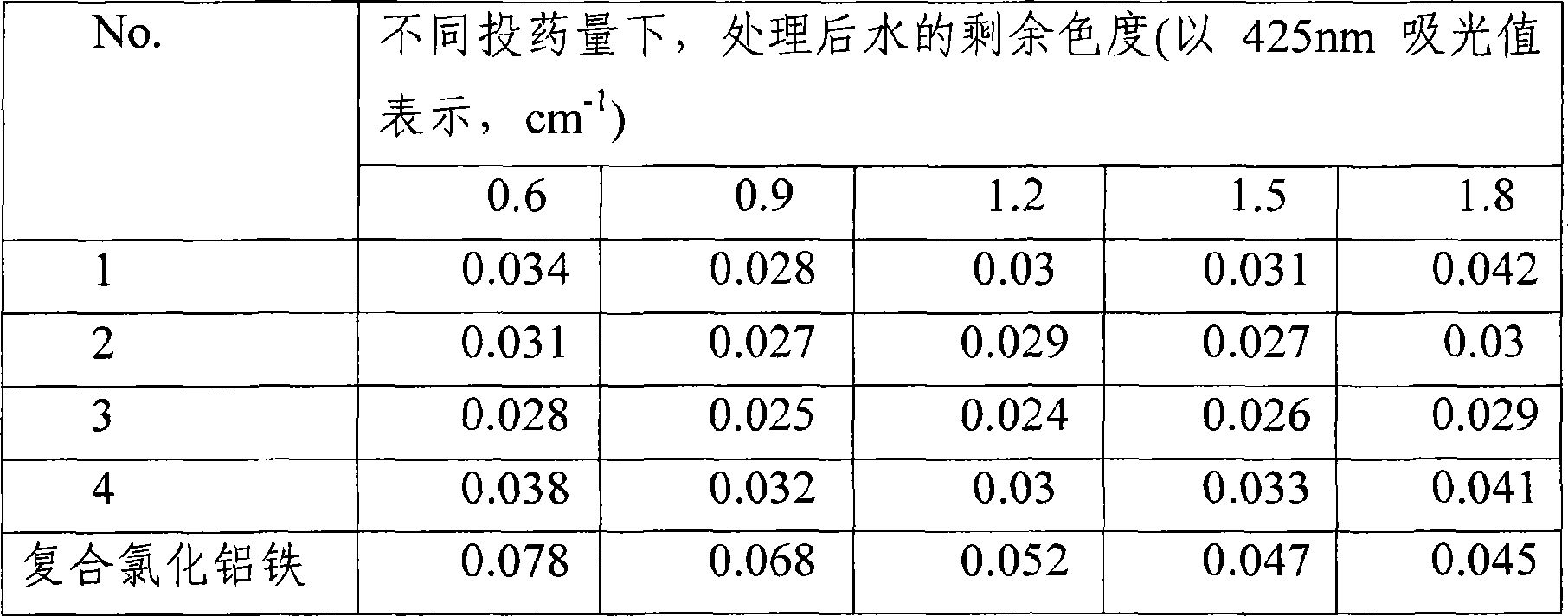Method for preparing inorganic polymer composite aluminum iron zinc coagulant from aluminum plating zincilate
A technology of composite aluminum-iron and coagulant, which is applied in the field of water treatment to achieve excellent coagulation effect, low cost and good storage stability
- Summary
- Abstract
- Description
- Claims
- Application Information
AI Technical Summary
Problems solved by technology
Method used
Image
Examples
Embodiment 1
[0019] Break 3kg of galvanized slag into medium or fine slag samples. At a temperature of 70°C to 100°C and stirring conditions of 200 rpm to 600 rpm, add 27.8kg of hydrochloric acid solution (20% by mass fraction) and 2.3kg of sulfuric acid solution (40% by mass fraction) Leach into the above block sample, control the leaching time to 3h, and then filter at a temperature of 40°C to 100°C to obtain a filtrate for future use. Under the temperature condition of 20° C. to 60° C., 62.5 kg of sodium hydroxide (40% by mass) solution was added to the above filtrate, the pH value was controlled to 2.8, and the polymerization was carried out for 3 hours to obtain a milky white liquid product.
Embodiment 2
[0021] Break 3kg of galvanized slag into medium or fine slag samples. At a temperature of 70°C to 100°C and stirring conditions of 200 rpm to 600 rpm, 14.2kg of hydrochloric acid solution (10% by mass fraction) and 2.1kg of sulfuric acid solution (20% by mass fraction) were added Leach into the above block sample, control the leaching time to 15h, and then filter at a temperature of 40°C to 100°C to obtain a filtrate for future use. Under the temperature condition of 20° C. to 60° C., 41 kg of sodium hydroxide (20% by mass) solution was added to the above filtrate, the pH value was controlled to 1.5, and the polymerization was carried out for 3 hours to obtain a colorless liquid product.
Embodiment 3
[0023] Break 3kg of galvanized slag into medium or fine slag samples. At a temperature of 70°C to 100°C and stirring conditions of 200 rpm to 600 rpm, add 10.6kg of hydrochloric acid solution (20% by mass fraction) and 1.4kg of sulfuric acid solution (70% by mass fraction) Leach into the above block sample, control the leaching time to 7h, and then filter at a temperature of 40°C to 100°C to obtain the filtrate, which is set aside. Under the temperature condition of 20° C. to 60° C., 30.8 kg of sodium hydroxide (20% by mass) solution was added to the above filtrate, the pH value was controlled to 2.0, and the polymerization was carried out for 3 hours to obtain a colorless liquid product.
PUM
| Property | Measurement | Unit |
|---|---|---|
| quality score | aaaaa | aaaaa |
| quality score | aaaaa | aaaaa |
Abstract
Description
Claims
Application Information
 Login to View More
Login to View More - R&D
- Intellectual Property
- Life Sciences
- Materials
- Tech Scout
- Unparalleled Data Quality
- Higher Quality Content
- 60% Fewer Hallucinations
Browse by: Latest US Patents, China's latest patents, Technical Efficacy Thesaurus, Application Domain, Technology Topic, Popular Technical Reports.
© 2025 PatSnap. All rights reserved.Legal|Privacy policy|Modern Slavery Act Transparency Statement|Sitemap|About US| Contact US: help@patsnap.com



